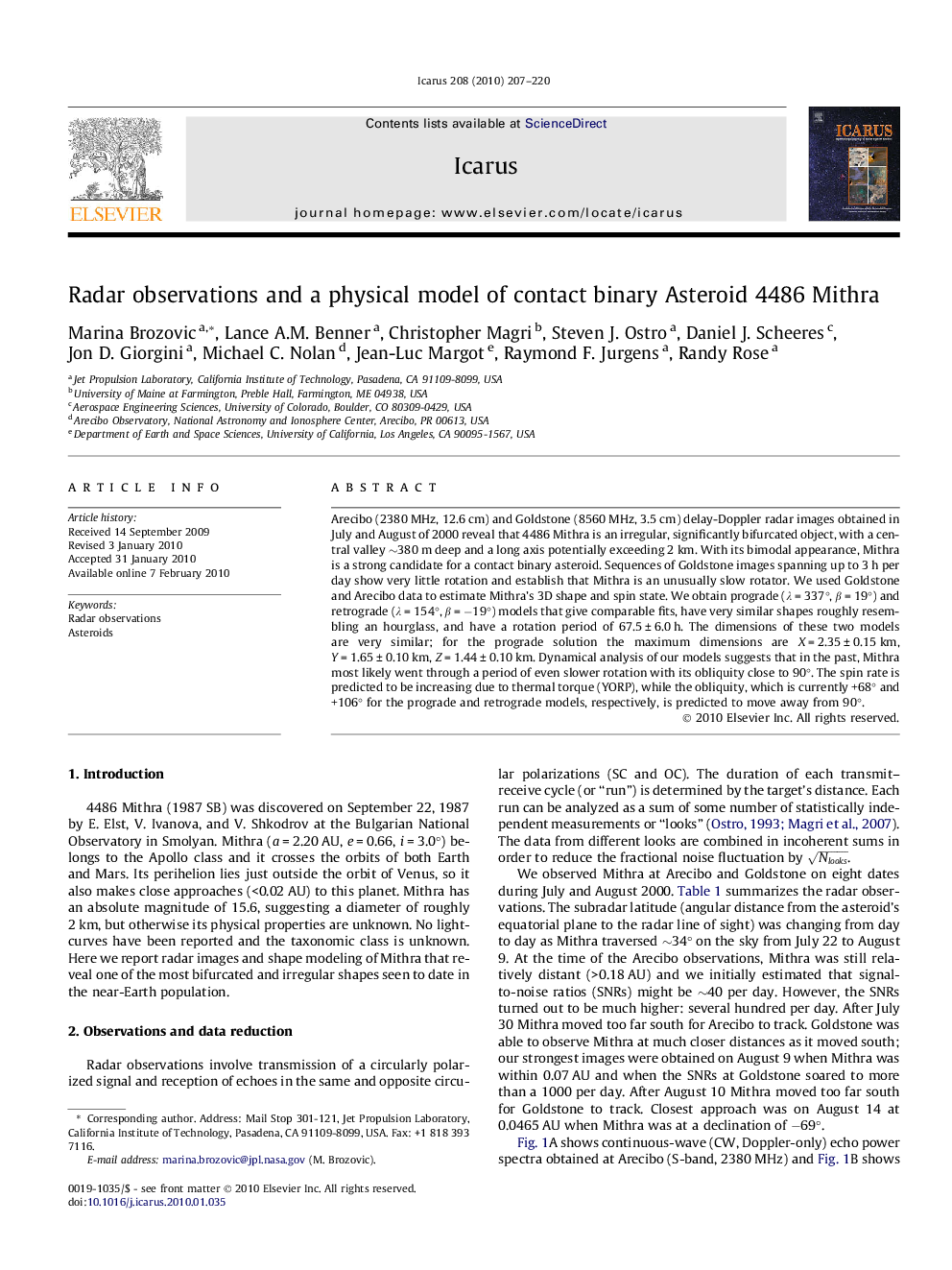| Article ID | Journal | Published Year | Pages | File Type |
|---|---|---|---|---|
| 1774675 | Icarus | 2010 | 14 Pages |
Arecibo (2380 MHz, 12.6 cm) and Goldstone (8560 MHz, 3.5 cm) delay-Doppler radar images obtained in July and August of 2000 reveal that 4486 Mithra is an irregular, significantly bifurcated object, with a central valley ∼380 m deep and a long axis potentially exceeding 2 km. With its bimodal appearance, Mithra is a strong candidate for a contact binary asteroid. Sequences of Goldstone images spanning up to 3 h per day show very little rotation and establish that Mithra is an unusually slow rotator. We used Goldstone and Arecibo data to estimate Mithra’s 3D shape and spin state. We obtain prograde (λ = 337°, β = 19°) and retrograde (λ = 154°, β = −19°) models that give comparable fits, have very similar shapes roughly resembling an hourglass, and have a rotation period of 67.5 ± 6.0 h. The dimensions of these two models are very similar; for the prograde solution the maximum dimensions are X = 2.35 ± 0.15 km, Y = 1.65 ± 0.10 km, Z = 1.44 ± 0.10 km. Dynamical analysis of our models suggests that in the past, Mithra most likely went through a period of even slower rotation with its obliquity close to 90°. The spin rate is predicted to be increasing due to thermal torque (YORP), while the obliquity, which is currently +68° and +106° for the prograde and retrograde models, respectively, is predicted to move away from 90°.
